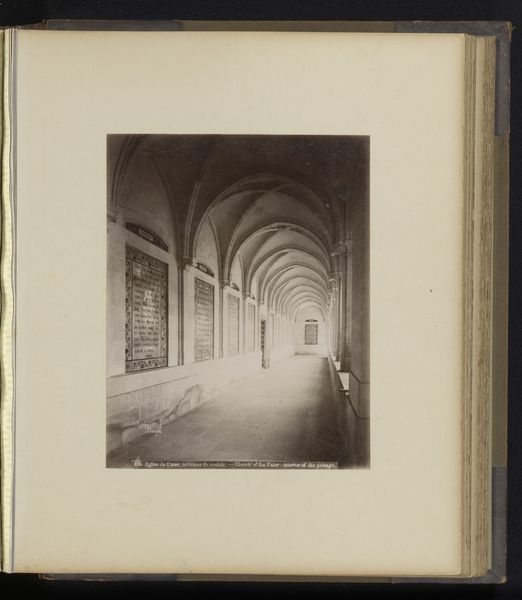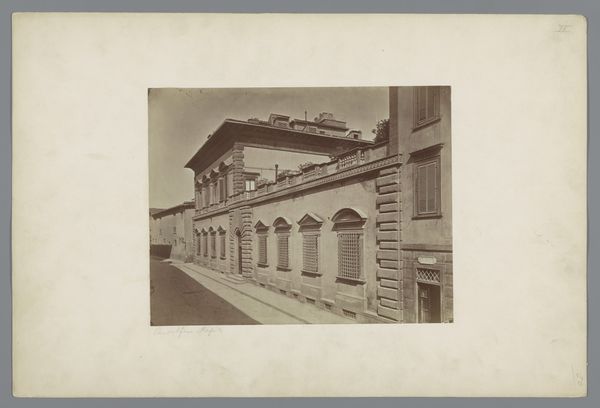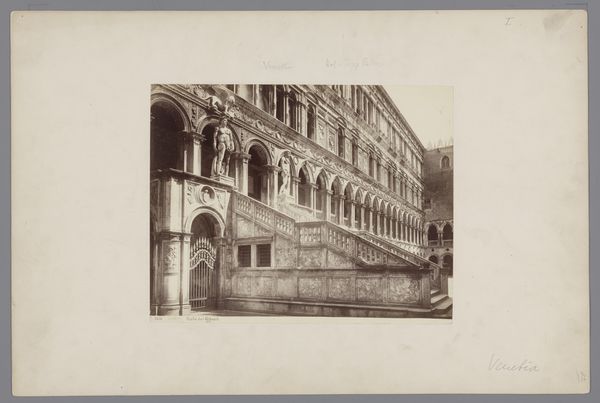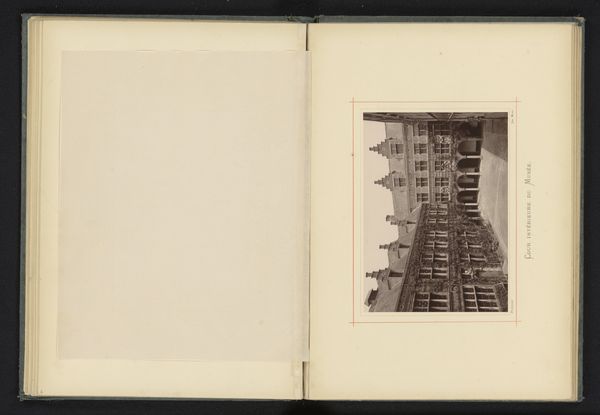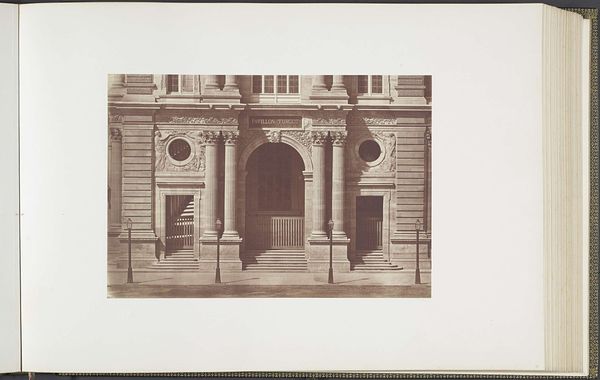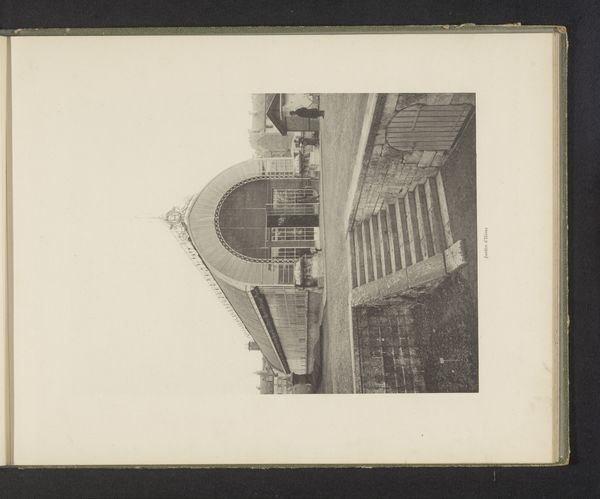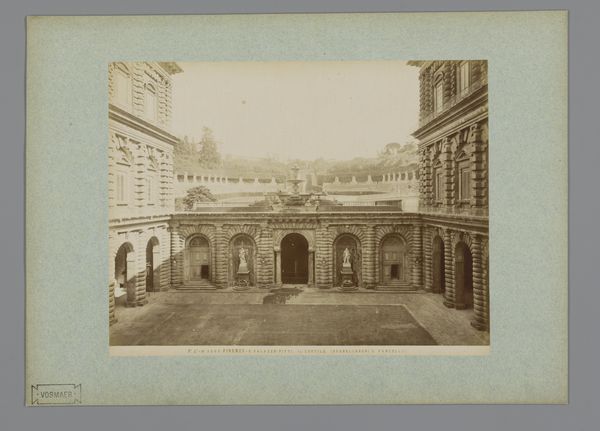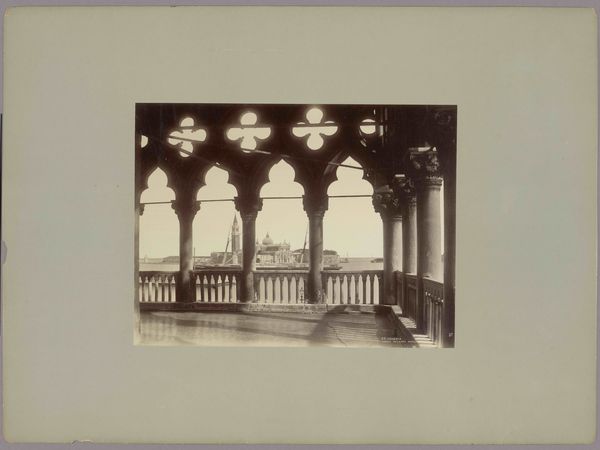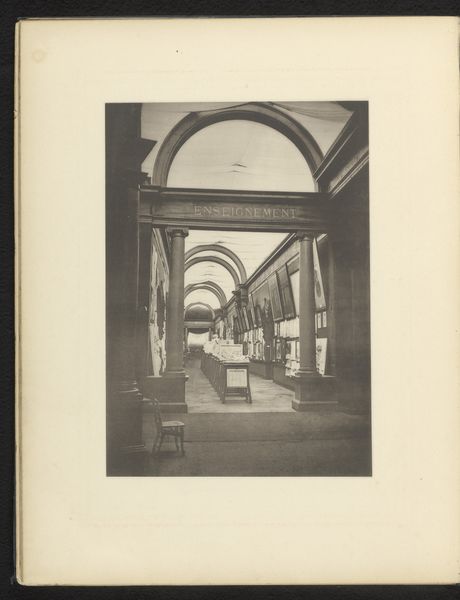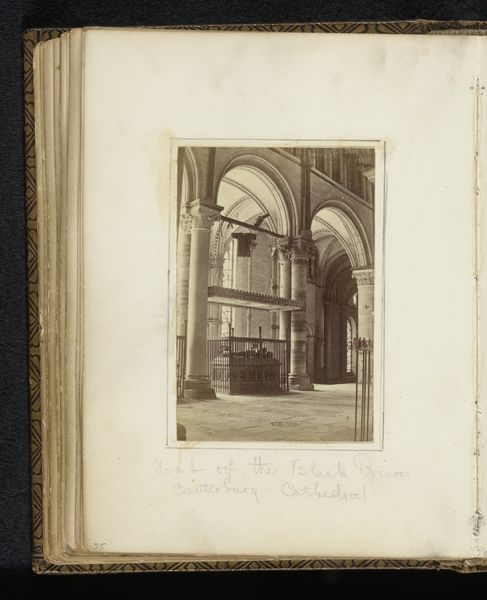
photography, gelatin-silver-print
#
landscape
#
photography
#
orientalism
#
gelatin-silver-print
#
academic-art
Dimensions: height 207 mm, width 244 mm
Copyright: Rijks Museum: Open Domain
Giorgio Sommer made this photograph of the cloister of San Martino in Naples using an albumen print, a popular process in the 19th century that utilized the protein found in egg whites. The surface of the print, now faded to sepia, bears witness to the artist's craft, as well as the economic realities of photography at this time. While we may think of photography as a modern, mechanical medium, the production of these prints involved considerable handwork. From preparing the glass plate negatives, to coating the paper with albumen and silver nitrate, each step required skill and precision. Moreover, the availability and cost of these materials would have influenced Sommer's practice, dictating the scale and format of his work. In considering this photograph, we are reminded of the labor involved in its creation, and how this affects our appreciation of its beauty. By understanding the materials and processes behind this image, we gain a deeper understanding of its place in the history of both art and industry.
Comments
No comments
Be the first to comment and join the conversation on the ultimate creative platform.

